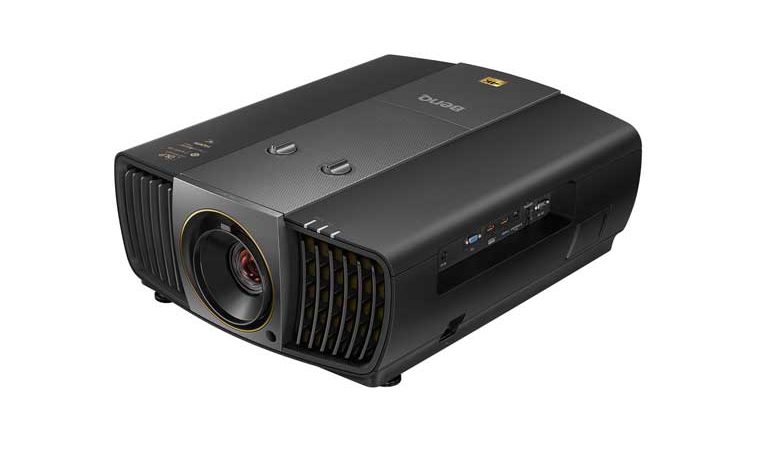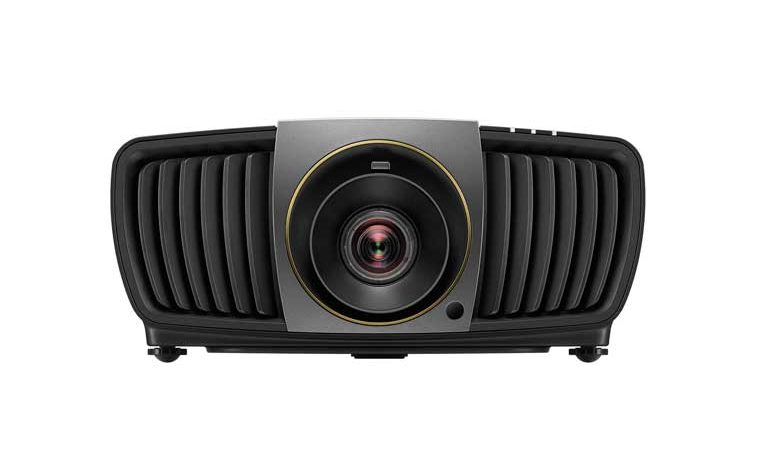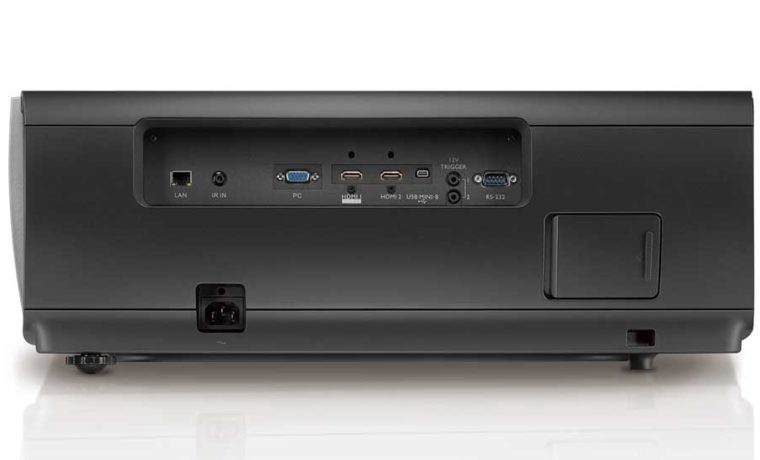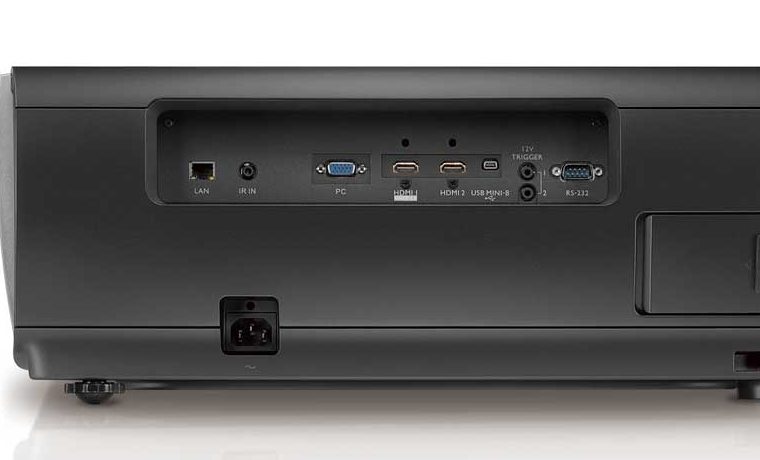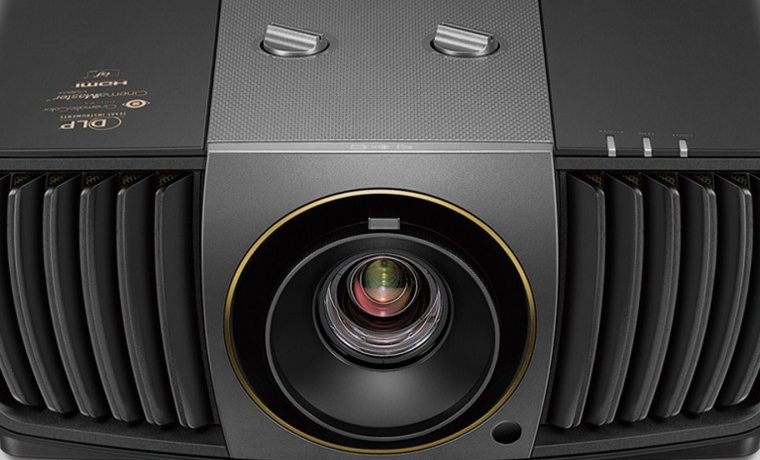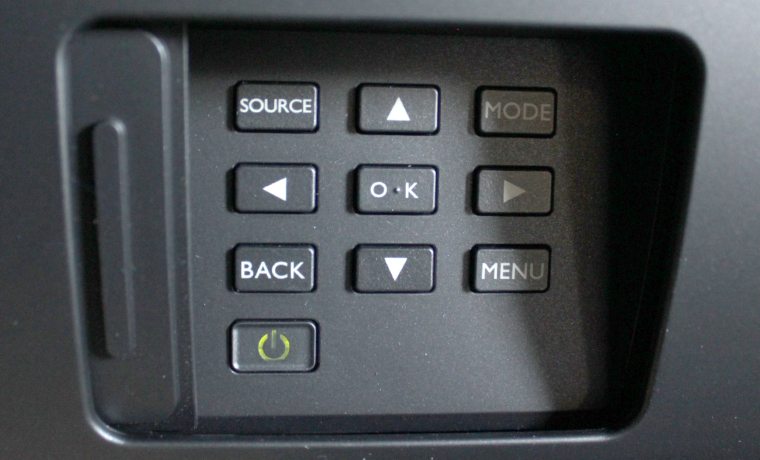Let’s start with a quick tour of the BenQ HT9050 projector from the front, then we’ll get into more details.
As I said, this is a largish home theater projector. No lightweight, it weighs in at an impressive 40.8 lbs! No doubt the LED light engine contributes to the weight (laser projectors also tend to be heavy). The key reason that it’s far larger than, say, the Optoma UHD65, Acer, or Vivitek HK2299, is for the optics and the extensive lens shift. Small DLP projectors typically have no lens shift at all, or a really minimal amount of vertical only (i.e. 5%). By comparison the BenQ has 60% – plus, it offers a good amount of horizontal lens shift as well. That is a major reason for the larger projector size.
The BenQ HT9050 itself is finished in both shiny and matte dark gray/black.
The 1.5:1 manual zoom lens is center mounted in the front (for the easiest installation). It is recessed. An infra-red sensor for the remote control is also found on the front, as are a pair of exhaust vents. Three indicator lights are on the front, top edge, to the right of the lens (if facing the projector).
Moving to the top, you will find two dials – one is for the manual vertical lens shift, the other, horizontal lens shift, and there’s plenty of it (+/-65% vertical, +/-27% horizontal). Other than that, there’s only the BenQ logo up top. All the other action is located on the right side (again, if looking at the front). Even the receptacle for the power is on the side.

